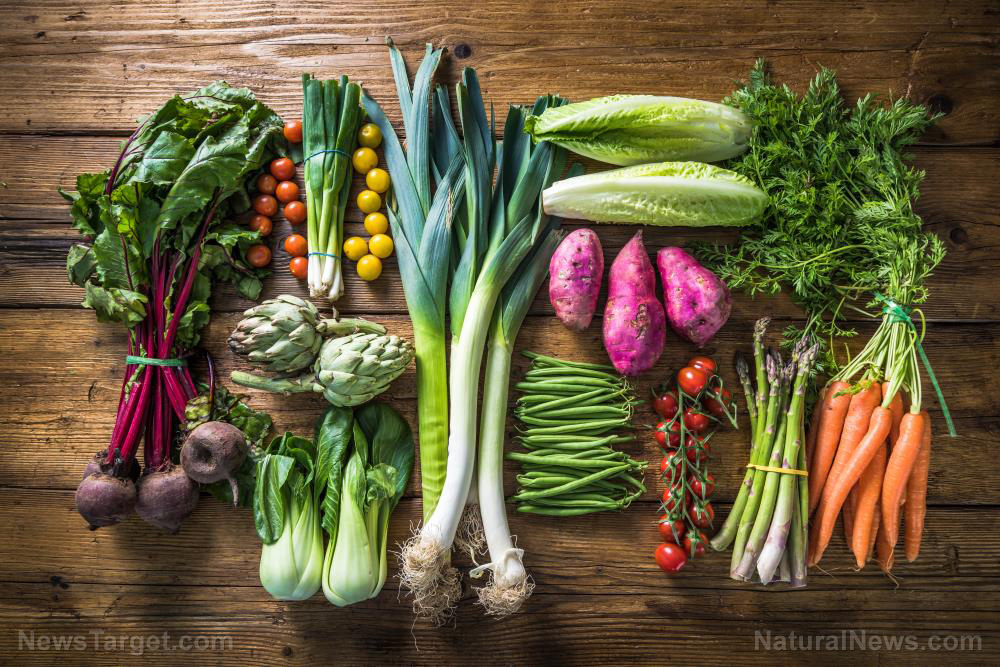
But what if you have excess produce and no root cellar for storage? If you're looking for storage options for your excess harvest, check out the three options detailed below. (h/t to ThePrairieHomestead.com)
How to store your harvest if you don't have a root cellar
Don't worry if you don't have a root cellar. While having one is a great idea, not all vegetables suit a root cellar or long-term storage.
If you grow vegetables like cucumbers, green beans, or tomatoes in your home garden, these crops should be canned, fermented, or frozen.
Meanwhile, root crops like beets, carrots, parsnips and potatoes are best stored in root cellars or cold storage. You can grow a lot of these vegetables and they will keep for several months if stored properly.
Here are some of the vegetables that you should store in a root cellar:
Remember that each type of vegetable comes with its own set of instructions for pre-storage preparation.
Even if you don't have a root cellar, you can store vegetables by mimicking a root cellar environment. All you need is a room or container that is cold, dark and humid.
While different vegetables have specific storage requirements, one thing you need to remember as a beginner is: The colder the better.
Just make sure the room isn't too cold that your vegetables freeze. This is bad because things that are frozen usually become mushy once they thaw out. You can avoid this by keeping the temperature right above 32 F, with some humidity (if possible).
Once you pull vegetables from the garden, they are still alive for a time. As vegetables age, they start to lose some of their moisture.
Keeping vegetables in a humid environment helps slow that moisture loss and keeps them fresher longer.
How to create a root cellar environment for potatoes and onions
Both potatoes and onions require some air circulation because they rot and get moldy very quickly.
When storing potatoes, keep them in cardboard boxes. Place a layer of newspaper between each row of potatoes, then completely close the cardboard box.
Store your box of potatoes in a part of your basement that is very dark. Remember that if potatoes get exposed to light, they will start to sprout.
Basements are also a good place to hang onion braids. Follow the steps below to make onion braids:
You will need:
- Onions with pliable tops attached
- String
Steps:
- Use two big onions for the bottom layer. Crisscross the two onions, then place a third onion in the middle.
- Wrap the onion whose stalk was on the very bottom to keep the base layer in place. Bring the bottom stalk up over the top of all three onion stalks and wrap it back underneath so the tail is sticking out on the side like it did before. These onions will form the three "strands" for braiding.
- With the initial layer secure, start adding more onions to the braid.
- Place one onion in the middle of the first three with its stalk lined up with the other middle stalk. Braid it three times as if you were braiding hair.
- Add two more onions into the braid. But instead of putting one onion in the middle, lay two onions on the sides: One on the left and one on the right. Their stalks have to line up with the other left and right stalks, then braid three times.
- Repeat with a single onion in the middle, then add two more onions on the sides. Braid between each addition.
- Repeat this pattern until you’ve added all the onions you want to include in the braid. Finish with a single onion in the middle.
- Finish braiding the tops until the end using simple braiding. Tightly tie off with an extra length of string. Loop the end of the braid back over itself, then tie it so you have a loop for hanging.
- Hang onion braids in a cool, dry place. Just cut off an onion when you need it.
Notes:
- If stored properly, braided onions will last for six to 12 months.
- If you have several onion braids, keep them in a cool, dark place. Bring out one braid at a time to hang in your kitchen.
- The onion braid will continue to dry as it hangs. Adjust the tightness of the string to prevent onions from slipping off.
- This method can also be used to make garlic braids.
You don't need to braid onions if you don't know how to, but this storage method is ideal because it allows for proper air circulation.
3 Ways to store vegetables without a root cellar
If you have extra root crops from your home garden, try the root cellar alternatives below to make them last longer.
Leave crops planted in your home garden
Note that this option will depend on the climate in your area. If you live in a state with a more normal climate, you can leave certain crops in the garden until you need them, like carrots and parsnips.
As some root vegetables mature, their tops will stick up out of the ground. If you choose this method, you need to keep your crops completely covered because if any part of the skin is exposed and it freezes, they won't be good anymore.
Cover vegetables with a heavy layer of mulch, or at least 18 inches. Use straw or grass clippings. Alternatively, you can cover rows with a tarp anchored down with concrete blocks.
Depending on the climate, you can try this method until October or November. Beyond that, it may be too cold. Leaving vegetables in your garden is ideal if you live in a more temperate climate.
Use an unheated room for storage
You can use any unheated rooms in your house, the basement or the garage. Just make sure the room you choose won't freeze in winter.
Use an old refrigerator
If you need more storage space for your excess harvest, buy an old fridge online. Keep the old fridge in your garage, shop, or the backroom.
Since the fridge is old, it won't get too cold and freeze the vegetables. You can also use it to store beets and carrots. Put a little pan of water in the old fridge to help with the humidity. (Related: 4 Best food storage containers for your stockpile.)
Other alternatives for a root cellar
If you're good with your hands, you can also try these projects for other root cellar alternatives:
- Build a makeshift pallet root cellar.
- Build a cold storage room in the basement.
- Bury several five-gallon buckets into the ground for extra storage.
- Make a zeer pot.
- Use your attic as storage space.
- Build a food storage shelf.
If leaving vegetables planted in your garden isn't ideal for the climate in your area, use an unheated room for storage or buy an old fridge.
Go to FoodStorage.news to check out more articles with tips storing vegetables and other supplies in your survival stockpile.
Sources include:
Please contact us for more information.























